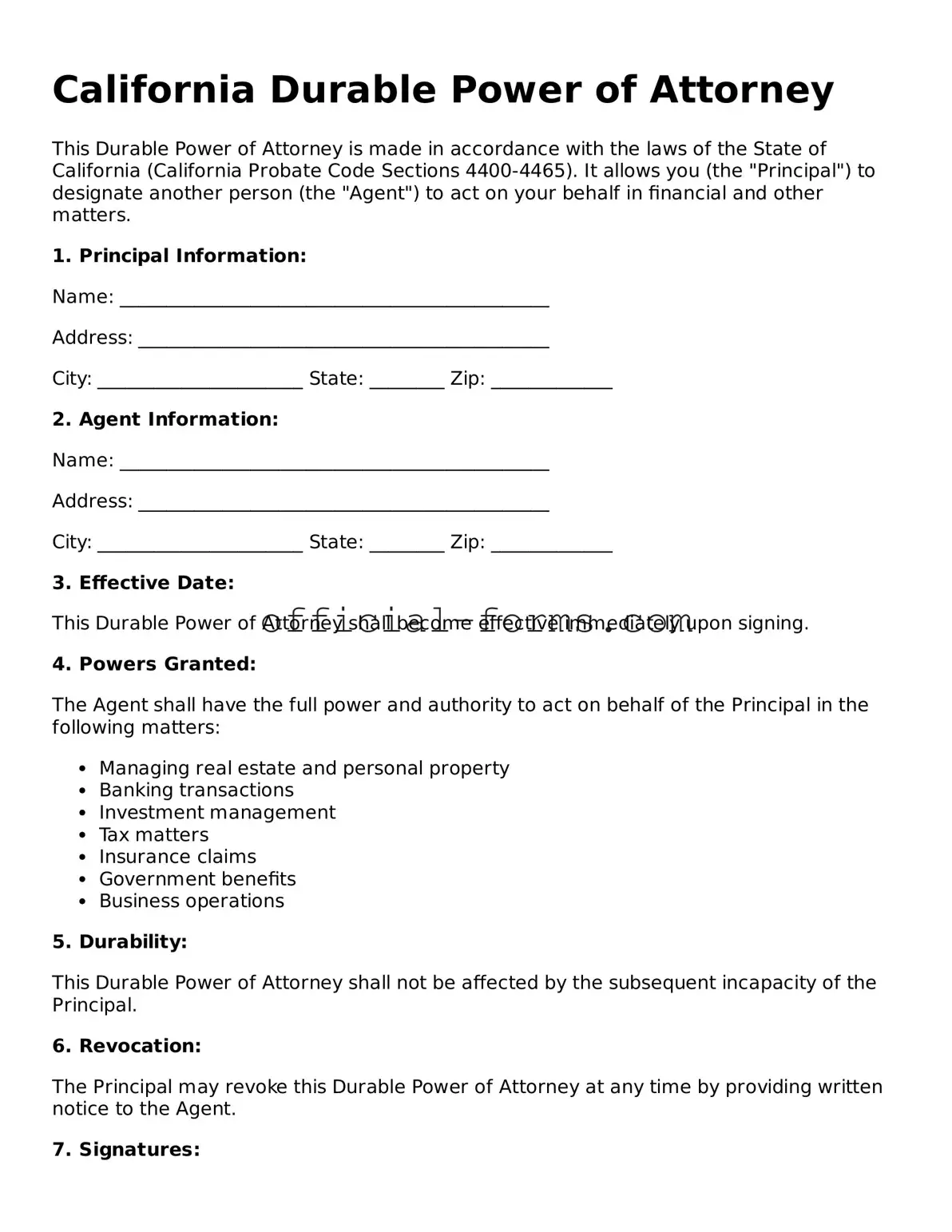When filling out the California Durable Power of Attorney form, individuals often make several common mistakes that can lead to complications in the future. One frequent error is not specifying the powers granted to the agent clearly. It’s essential to outline the exact authority the agent will have, as vague language can create confusion and may result in disputes later.
Another mistake is failing to date the document appropriately. A Durable Power of Attorney is only valid if it is signed and dated correctly. Without a date, it may be difficult to determine when the powers take effect, which could lead to legal challenges.
Many people overlook the importance of having the form notarized. While notarization is not always required, it is highly recommended. This step adds an extra layer of authenticity and can help prevent issues regarding the validity of the document.
Some individuals forget to inform their chosen agent about their designation. It is crucial to discuss the role and responsibilities with the agent beforehand. This conversation ensures that the agent is willing and prepared to take on this significant responsibility when the time comes.
Another common oversight is neglecting to review the document after it has been filled out. Changes in circumstances or preferences may occur over time. Regularly reviewing the Durable Power of Attorney ensures that it still reflects the individual’s wishes and needs.
People sometimes fail to include alternate agents. Life is unpredictable, and the primary agent may not always be available to act on someone’s behalf. Designating an alternate agent can provide peace of mind, ensuring that there is always someone ready to step in if necessary.
In some cases, individuals may not understand the implications of the powers they are granting. It is important to fully comprehend what authority is being given to the agent, including financial and medical decisions. Taking the time to understand these implications can prevent future misunderstandings.
Lastly, not keeping copies of the completed form can lead to difficulties down the line. It is advisable to retain copies for personal records and provide copies to the agent and any relevant institutions. This practice ensures that everyone involved is aware of the arrangement and can act accordingly.
